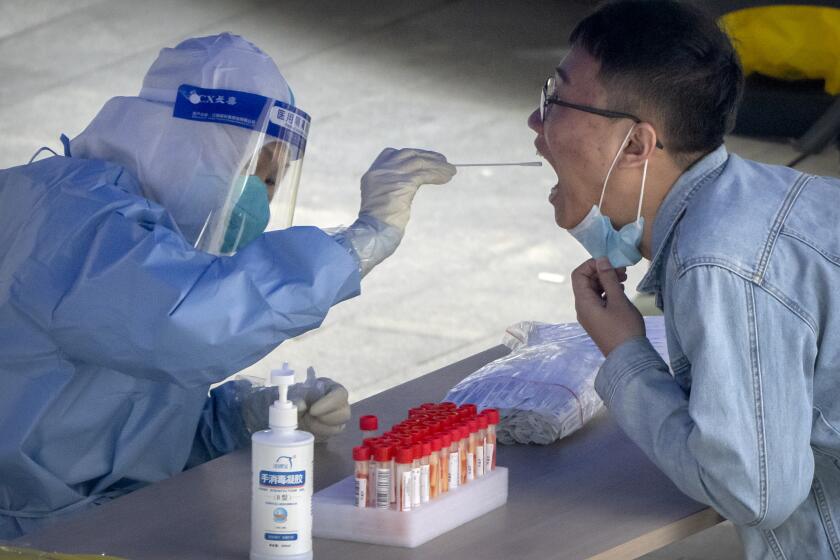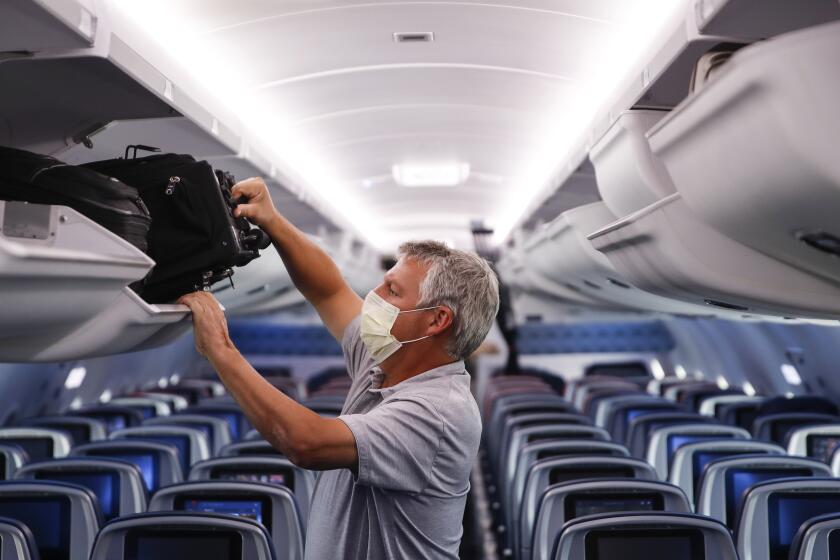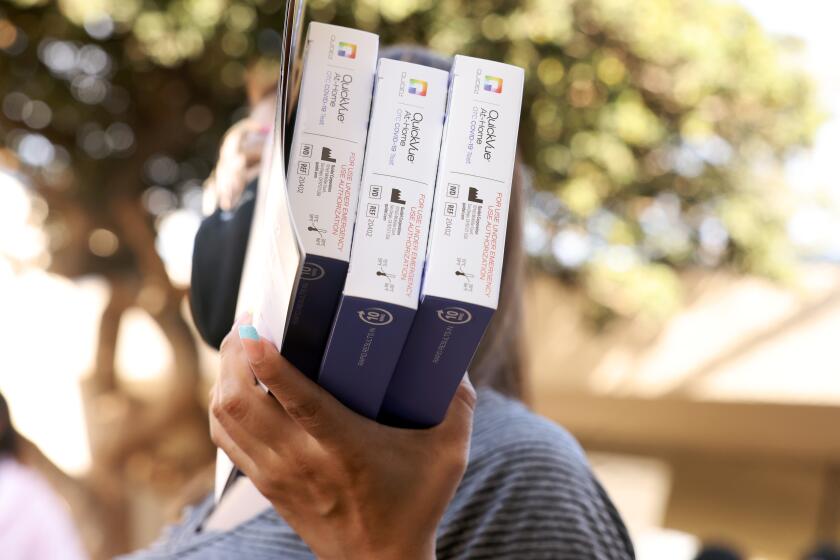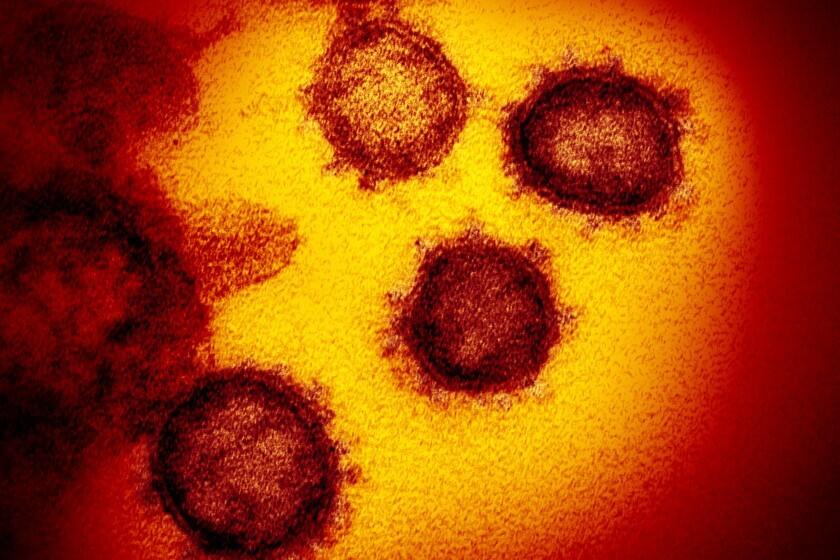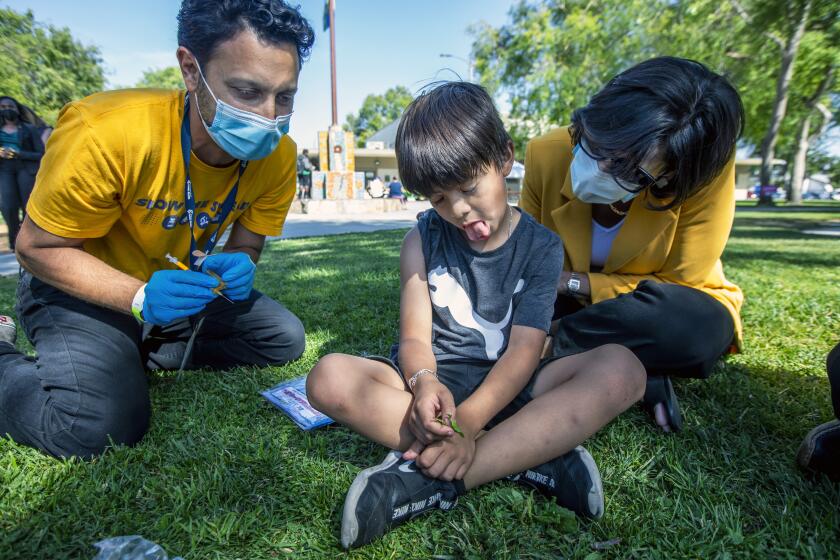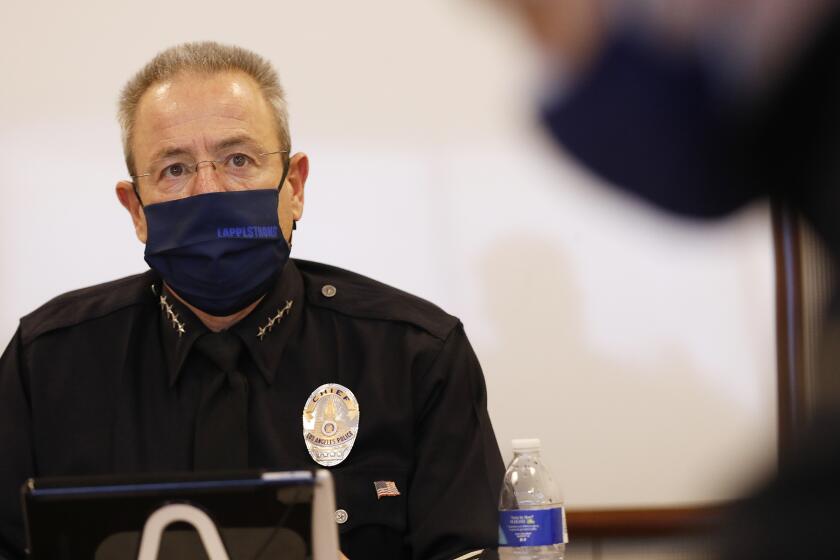California COVID-19 deaths near 90,000, but the per capita rate is among lowest in U.S.
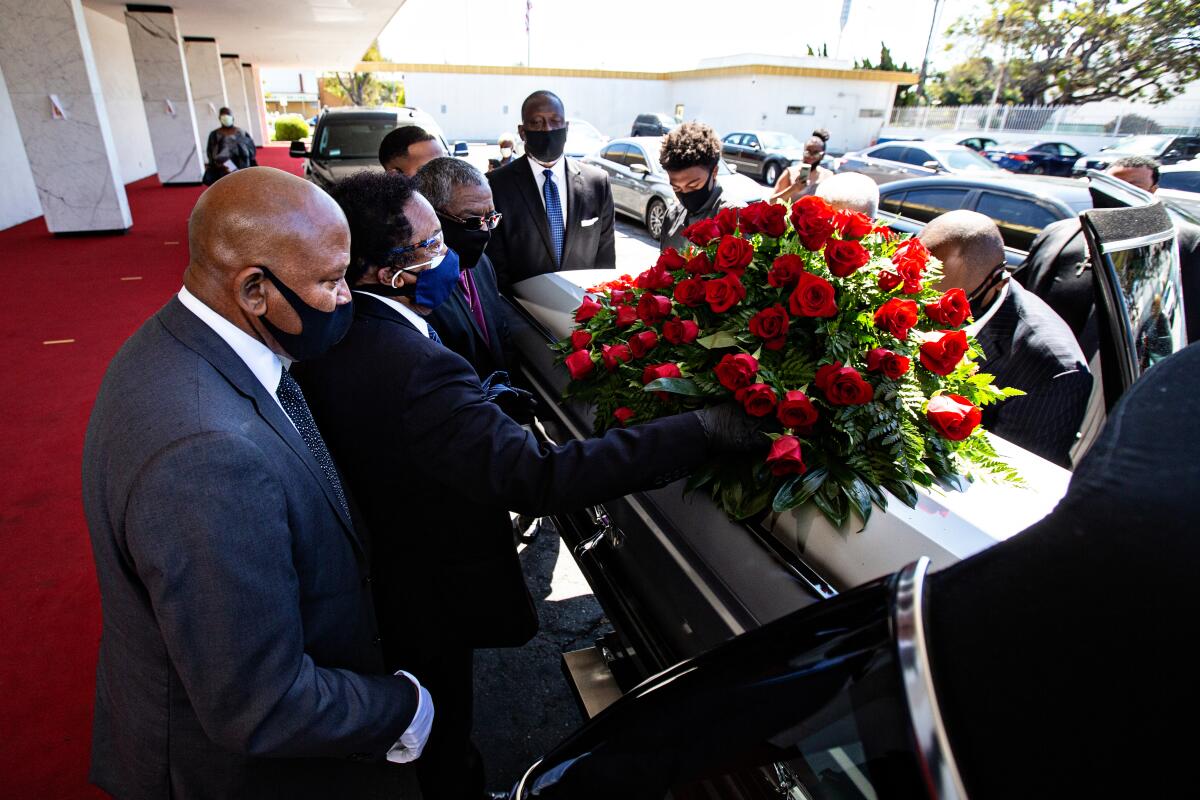
- Share via
California’s COVID-19 death toll is on the cusp of 90,000, a tally that comes as the U.S. is nearing its own milestone of 1 million deaths.
As of Friday, California had reported 89,851 cumulative deaths since the start of the pandemic, up 269 from the previous week. At this pace, the state is likely to surpass 90,000 COVID-19 fatalities this week.
No state has suffered more total pandemic-related deaths than California. However, on a per capita basis, California has the 11th-lowest cumulative COVID-19 death rate — with 229.5 deaths for every 100,000 residents, according to data compiled by The Times. Roughly a year ago, a similar analysis revealed California had the 22nd lowest cumulative COVID-19 death rate of any state.
California also now has the lowest cumulative COVID-19 death rate of the nation’s 10 most populous states. By comparison, the cumulative COVID-19 death rate in Florida is 359.4 per 100,000 residents. In New York, it’s 348.8; and in Texas, it’s 316.1.
The deaths were either from COVID-19 itself or causes stemming from the disease, such as inadequate care from overwhelmed health systems.
The worst rate can be found in Arizona, where the total reported death toll — just under 30,200 — amounts to 434.6 fatalities for every 100,000 residents.
If Arizona had experienced California’s same death rate, about 14,000 fewer people would’ve died from COVID-19 to this point. And if California had Arizona’s death rate, the Golden State would’ve seen 170,000 people perish from COVID-19, instead of the nearly 90,000 reported so far.
The wide divergence in death rates demonstrates just how differently the pandemic has played out in varying corners of the country. California, for example, has one of the nation’s better vaccination rates — with 72% of residents of all ages having completed their primary vaccination series. In Arizona, 62% of residents have done likewise, according to data from the U.S. Centers for Disease Control and Prevention.
Of vaccinated adults who have completed their primary vaccination series, 56% in California have received their first booster shot, while 45% have done so in Arizona.
Health officials have routinely said getting vaccinated and boosted provides robust protection against the worst of COVID-19. According to the most recent data from the California Department of Public Health, unvaccinated residents remain roughly nine times more likely to die from COVID-19 than those who have been fully vaccinated and boosted.
Dr. Ashish Jha, the White House COVID-19 task force coordinator, said on ABC’s “This Week” that the “surge of infections” seen in the Northeast has not resulted in a big spike in deaths “because the population is so well vaccinated and boosted. That’s not true for the whole country.”
While vaccinations and booster shots dramatically reduce risk, they don’t eliminate it, including lasting effects such as long COVID and higher risk among COVID survivors for heart disease and diabetes. Officials and experts say it’s also prudent to take sensible measures to reduce infection risks, such as wearing masks in indoor public settings.
Two of California’s major metropolises — Los Angeles County and much of the San Francisco Bay Area — reinstituted mask mandates last summer that were lifted before the start of spring. That meant universal masking was still customary across large swaths of the state’s most populated areas as the Omicron surge roared to life.
The CDC’s mask requirement for travelers isn’t likely to come back anytime soon, but the stakes for the government’s legal appeal are still huge.
Some local officials believe masking helped reduce the severity of the most recent wave.
While the fall-and-winter Omicron surge has faded, California and the rest of the nation are now facing a second increase in Omicron cases. How bad it will get — in terms of hospitalizations and deaths — remains unclear.
California has continued to observe an increase in new weekly coronavirus cases. Over the last week, the state averaged about 7,300 new coronavirus cases a day — up from about 6,200 the previous week. That’s a 17% increase in the week-over-week case rate, but it’s more modest compared to the prior week, when there was a 33% increase in the weekly case rate.
While that could be a sign of a possible plateau, it’s too soon to say.
In any case, the rate of increase is far slower than during the first Omicron spike, when cases sometimes jumped by more than 100% from week to week.
Coronavirus cases continue to rise in California, prompting one health official to say the state is heading into the next wave of the pandemic.
Coronavirus-positive hospitalizations in L.A. County and the San Francisco Bay Area have remained stable or are ticking up only slightly, and officials haven’t expressed alarm at the trends. As of Saturday, there were 1,185 coronavirus-positive patients in hospitals in California, up from 1,035 from the prior week.
In L.A. County, coronavirus-positive hospitalizations have remained relatively stable for the last three weeks, hovering roughly between 210 and 260 — among the lowest numbers of the entire pandemic.
“While cases have been steadily increasing, we are relieved that our test positivity rate has only gone up slightly, and that COVID-19 related hospitalizations and deaths have remained relatively stable,” L.A. County Public Health Director Barbara Ferrer said last week.
And in San Francisco, health director Dr. Grant Colfax said that despite the city’s relatively high case rate, hospitalizations were low.
“I think this reflects our relatively high immunity levels in the community, as well as the fact that we have a high booster rate,” Colfax told city health commissioners last week.
The Omicron strain of the coronavirus keeps generating new subvariants. Here’s a look at how they stack up.
Other experts, however, have expressed concern at the high case rates in the Bay Area. San Francisco has one of the state’s worst rates, at 278 weekly cases for every 100,000 residents. By comparison, L.A. County is reporting 144 weekly coronavirus cases for every 100,000 residents. A rate of 100 or higher is considered a high rate of transmission, the worst category as defined by the CDC.
And while L.A. County’s test positivity rate is just above 2%, San Francisco’s rate is 8%. San Francisco’s high rate may be because of greater testing that gets reported to officials, “but it is concerning,” Dr. George Rutherford, a UC San Francisco epidemiologist and infectious diseases expert, told colleagues at a campus town hall meeting Friday.
In previous weeks, experts have expressed a relative degree of optimism that people who survived an earlier Omicron infection — from the subvariant known as BA.1 — in December and January were probably protected against a second Omicron subvariant, BA.2, that has emerged.
Dr. Rochelle Walensky, director of the CDC, visited the vaccination site at Ted Watkins Memorial Park in Los Angeles and discussed the next phase of getting Americans to get the COVID-19 shot.
But these Omicron survivors may not be as well protected against a reinfection with the latest even-more-contagious Omicron subvariant, BA.2.12.1, Rutherford warned. BA.2.12.1 is about 25% more contagious than BA.2, which is about 30% more contagious than the first Omicron subvariant BA.1.
“BA.2.12.1 also has some mutations that make it less susceptible to neutralization by antibodies from people with prior infection —specifically people who are infected in December and January with the BA.1 strains,” Rutherford said.
Still, Rutherford did say national data suggest there are fewer coronavirus-positive hospitalizations for every coronavirus case than in prior periods. Hospitalizations have gone up nationally at a more modest pace than cases.
In an interview with The Times, CDC Director Dr. Rochelle Walensky said that, despite the recent increases: “Our cases are relatively low, our hospitalizations are relatively low and our deaths are actually quite low.
“That said, our cases have gone up week over week for the last couple of weeks, our hospitalizations have gone up week over week for the last couple of weeks, and our deaths are still too high,” she said. “So we are in a phase of the pandemic where we need to be cautious.”
New data show few LAPD officers were ever punished for disobeying a directive that they wear masks amid the pandemic, despite hundreds of complaints.
Rutherford said he still does not expect the current increase in coronavirus cases to approach the levels seen in December and January. He recommended that people eligible for the second booster get it; he suggested that people planning trips this summer get a second booster about two weeks before traveling. But for people without plans, he suggested they get the additional shot promptly.
“Think of the [additional benefits provided by the] second booster as lasting for about two months. So if you’re going to travel somewhere this summer, try and time it so that you get it a couple of weeks before your [increased] exposure starts,” Rutherford said. “If you’re not going anywhere, get it now.”
More to Read
Sign up for Essential California
The most important California stories and recommendations in your inbox every morning.
You may occasionally receive promotional content from the Los Angeles Times.
